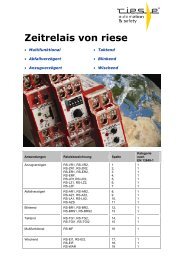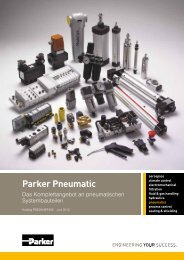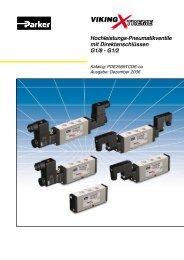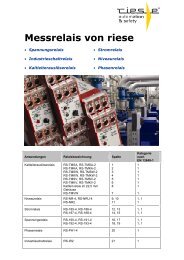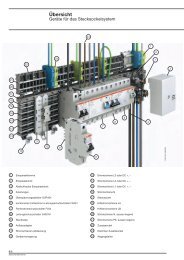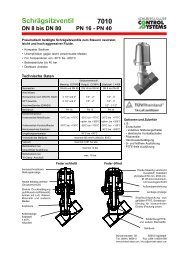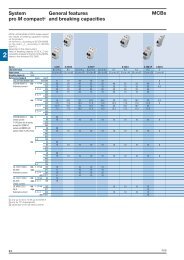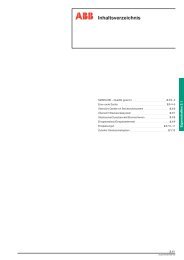Technical details System pro M compact®
Technical details System pro M compact®
Technical details System pro M compact®
- No tags were found...
You also want an ePaper? Increase the reach of your titles
YUMPU automatically turns print PDFs into web optimized ePapers that Google loves.
<strong>System</strong><strong>pro</strong> M compact ®<strong>Technical</strong> <strong>details</strong>Functions and classifi cation criteriafor RCDsRCDsFunctions and classification criteria for RCDsA residual current operated circuit-breaker is an amperometric <strong>pro</strong>tection device which is trippedwhen the system leaks a signifi cant current to earth.This device continuously calculates the vector sum of the single-phase or three-phase system linecurrents and while the sum is equal to zero allows electricity to be supplied. This supply is rapidlyinterrupted if the sum exceeds a value preset according to the sensitivity of the device.RCCBsResidual current operated circuit-breakers can be classed according to four parameters:• type of construction• detectable wave form• tripping sensitivity• tripping time.Depending on the type of construction, RCDs may be classed as:• RCBOs (magnetothermic with overcurrent <strong>pro</strong>tection)• RCCBs (without overcurrent <strong>pro</strong>tection releaser incorporated)• RCD blocks.RCD-blocksRCBOs combine, in a single device, the residual current function and the overcurrent <strong>pro</strong>tectionfunction typical of MCBs. RCBOs are tripped by both current leakage to earth and overloads andshort-circuits and they are self-<strong>pro</strong>tecting up to a maximum short-circuit current value indicated onthe label.RCCBs are only sensitive to current leakage to earth. They must be used in series with an MCBor fuse which <strong>pro</strong>tects them from the potentially damaging thermal and dynamic stresses of anyovercurrents.These devices are used in systems already equipped with MCBs which preferably limit the specifi cenergy passing through, also acting as the main disconnecting switches upstream of any derivedMCBs (e.g.: domestic consumer unit).RCBOsRCD blocks are residual current devices suitable for assembly with a standard MCB. IEC/EN61009 app. G only allows assembly of RCBOs once on site, that is to say outside the factory, usingadaptable RCD blocks and the ap<strong>pro</strong>priate MCBs. Any subsequent attempts to separate them mustleave permanent visible damage. The residual current operated circuit-breaker obtained in this waymaintains both the electrical characteristics of the MCB and those of the RCD block.According to the wave form of the earth leakage currents they are sensitive to, the RCDs may beclassed as:• AC type (for alternating current only)• A type (for alternating and/or pulsating current with DC components)• B type (for alternating and/or pulsating current with DC components and continuous faultcurrent).AC type RCDs are suitable for all systems where users have sinusoidal earth current.They are not sensitive to impulsive leakage currents up to a peak of 250 A (8/20 wave form) such asthose which may occur due to overlapping voltage impulses on the mains (e.g.: insertion of fl uorescentbulbs, X-ray equipment, data <strong>pro</strong>cessing systems and SCR controls).A type RCDs are not sensitive to impulsive currents up to a peak of 250 A (8/20 wave form).They are particularly suitable for <strong>pro</strong>tecting systems in which the user equipment has electronic devicesfor rectifying the current or phase cutting adjustment of a physical quantity (speed temperature, lightintensity, etc.) supplied directly by the mains without the insertion of transformers and insulated inclass I (class II is, by defi nition, free of faults to earth). These devices may generate a pulsating faultcurrent with DC components which the A type RCD can recognise.11ABB11/61



